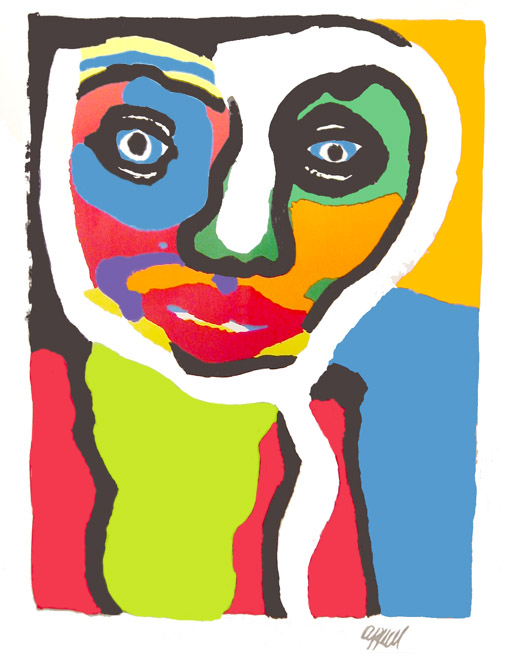
KAREL APPEL
Karel Appel was born on April 25th, 1921 in Amsterdam. He lived with his three brothers, his mother, and his father, who owned the barbershop on the ground floor of their home. Appel began painting at the age of fourteen; shortly after, his uncle, Karel Chevalier, gave him his first painting lessons and equipment.
From 1942-1944, Appel studied at the Royal Academy of Fine Arts in Amsterdam. It was there that he met the other artists who, along with Appel, would later create the COBRA group. In 1947, Appel developed a new style of assemblage, which created a narrative through elements of wood and found pieces in relief. The next year, Appel and other Dutch artists founded the Dutch Experimental Group in Amsterdam. They published a periodical titled Reflex, and joined other Danish and Belgian artists a few months later to become the International COBRA group (representing Copenhagen, Brussels, and Amsterdam). In 1949, COBRA had their first exhibition, the “International Exhibition of Experimental Art,” at the Stedelijk Museum in Amsterdam.
COBRA’s work was initially unpopular in the Netherlands, and Appel’s “Questioning Children” fresco in Amsterdam City Hall caused quite a controversy. In 1950, Appel moved to Paris to continue COBRA’s work, and also to escape the negative reactions in his home country. His work within COBRA was part of the larger Art Informel movement, which traded geometric abstraction for a more intuitive form of expression. In 1957, Appel traveled to the United States and Mexico, where various Abstract Expressionists and jazz musicians influenced him. From 1977 to 1985, Appel evolved his painting and explored different implementations of media, color, and subject. He also worked directly with Jane and Alexander Kahan to create some of his most beautiful and iconic prints.
By the 1990s, the tide had turned and Appel became quite popular in the Netherlands, with large exhibitions in Amsterdam and Brussels. The Cobra Museum also curated shows of his works; Appel had become the most famous and celebrated Dutch artist of COBRA. He died on May 3rd, 2006 at his home in Zurich.
Museum Collections
- Museum of Fine Arts – Boston
- The Museum of Modern Art – New York City [Lithograph example in permanent collection]
- Solomon R. Guggenheim Museum – New York City
- Buffalo AKG Art Museum – New York [Lithograph example in permanent collection]
- Tate Modern – London, UK
- National Museum of Art – Oslo, Norway
- Neue Nationalgalerie – Berlin, Germany
- Musée National d’Art Moderne, Centre Georges Pompidou – Paris, France
- Musée National d’Art Moderne et d’Art Contemporian – Nice, France
- National Museum of Art – Osaka, Japan
